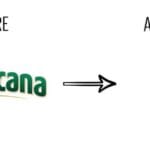In today’s digital age, having an effective and up-to-date website is crucial for businesses to stay competitive and reach their target audience. A website serves as the online face of a company, and it is often the first point of contact for potential customers. Therefore, it is essential for businesses to invest in website redesign to ensure that their online presence accurately reflects their brand and meets the needs of their customers.
Key Takeaways
- Website redesign is important for keeping up with changing trends and improving user experience.
- Factors that affect the cost of website redesign include complexity, functionality, and the level of customization required.
- Investing in a professional website redesign can lead to increased traffic, conversions, and revenue.
- Hiring a web designer can be more expensive than doing it yourself, but may result in a higher quality website.
- Different types of website redesigns, such as cosmetic or functional, have varying costs.
- Content plays a crucial role in website redesign and can impact cost depending on the level of customization required.
- Integrating e-commerce features into a website can increase cost, but can also lead to increased revenue.
- SEO is an important aspect of website redesign and should be factored into the budget.
- Budgeting for website redesign is crucial to ensure that all necessary costs are accounted for.
- Tips for reducing the cost of website redesign include prioritizing features, using templates, and doing some of the work yourself.
Understanding the Importance of Website Redesign
Website redesign is important for several reasons. Firstly, it improves user experience. A well-designed and user-friendly website makes it easier for visitors to navigate and find the information they are looking for. This can lead to increased engagement, longer time spent on the site, and ultimately, higher conversion rates.
Secondly, website redesign helps businesses stay competitive in a rapidly evolving digital landscape. Technology and design trends are constantly changing, and websites that do not keep up with these changes can quickly become outdated and unappealing to users. By regularly updating their websites, businesses can ensure that they are providing a modern and relevant online experience.
Lastly, website redesign allows businesses to take advantage of new technologies and features that can enhance their online presence. For example, integrating e-commerce functionality into a website can open up new revenue streams and expand the reach of a business. By investing in website redesign, businesses can leverage these opportunities and stay ahead of the curve.
Factors That Affect the Cost of Website Redesign
The cost of website redesign can vary greatly depending on several factors. One of the main factors is the complexity of the project. A simple cosmetic redesign, which involves updating the visual elements of a website without making significant changes to its structure or functionality, will generally be less expensive than a complete overhaul that requires rebuilding the entire site from scratch.
The size of the website is another factor that can affect the cost. Larger websites with more pages and content will require more time and effort to redesign, which can increase the overall cost of the project.
The level of customization required is also a factor to consider. If a business wants a highly customized website with unique features and functionalities, it will likely require more time and expertise from the web designer, which can drive up the cost.
The Benefits of Investing in a Professional Website Redesign
While it may be tempting for businesses to try to redesign their websites themselves or hire a freelancer to save money, there are several benefits to investing in a professional web designer for website redesign.
Firstly, a professional web designer has the expertise and experience to create a website that is not only visually appealing but also functional and user-friendly. They understand the best practices for website design and can ensure that the site is optimized for performance and usability.
Secondly, a professional web designer can help improve the overall design of the website. They have an eye for aesthetics and can create a visually appealing layout that aligns with the brand identity of the business. This can help create a positive impression on visitors and enhance the credibility of the business.
Lastly, hiring a professional web designer can lead to increased traffic and conversions. A well-designed website that is optimized for search engines can attract more organic traffic and improve the chances of converting visitors into customers. A professional web designer can implement SEO strategies and ensure that the website is easily discoverable by search engines.
The Cost of Hiring a Web Designer vs. Doing it Yourself
When considering website redesign, businesses often weigh the cost of hiring a web designer against the option of doing it themselves. While doing it yourself may seem like a cost-effective solution, there are several factors to consider.
Firstly, designing and developing a website requires technical skills and knowledge that may be beyond the capabilities of someone without experience in web design. This can result in a website that is poorly designed, difficult to navigate, or lacks essential features.
Secondly, designing a website from scratch can be time-consuming, especially for someone who is not familiar with the process. This can take away valuable time and resources from other important aspects of running a business.
Lastly, a poorly designed website can have a negative impact on the brand image and credibility of a business. Visitors may perceive a poorly designed website as unprofessional or unreliable, which can lead to lost opportunities and potential customers.
While hiring a web designer may come with a higher upfront cost, it can save businesses time, effort, and potential losses in the long run.
The Different Types of Website Redesigns and Their Costs
Website redesigns can vary in scope and complexity, which can impact the overall cost of the project. There are three main types of website redesigns: cosmetic redesigns, functional redesigns, and complete overhauls.
A cosmetic redesign involves updating the visual elements of a website without making significant changes to its structure or functionality. This type of redesign is generally less expensive as it focuses on improving the aesthetics of the site rather than making major changes to its underlying architecture.
A functional redesign, on the other hand, involves making changes to the structure and functionality of a website to improve its usability and performance. This type of redesign may require more time and expertise from the web designer, which can increase the cost.
A complete overhaul is the most extensive type of website redesign. It involves rebuilding the entire site from scratch, including its design, structure, and functionality. This type of redesign is often necessary when a website is outdated or no longer meets the needs of the business. However, it is also the most expensive option as it requires significant time and resources to complete.
The Role of Content in Website Redesign and Its Impact on Cost
Content plays a crucial role in website redesign as it is what drives engagement and conversions. When considering website redesign, businesses should also factor in the cost of creating or updating content.
If a business already has high-quality content that is relevant and engaging, the cost of content creation may be minimal. However, if the existing content is outdated or does not align with the new design and goals of the website, businesses may need to invest in creating new content.
The cost of content creation can vary depending on several factors, such as the type of content needed (e.g., blog posts, product descriptions, videos), the length and complexity of the content, and whether businesses choose to create the content in-house or hire a professional copywriter.
The Cost of Integrating E-commerce Features into Your Website
Integrating e-commerce features into a website can open up new revenue streams and expand the reach of a business. However, it is important to consider the cost of integrating these features when planning a website redesign.
The cost of integrating e-commerce features can vary depending on several factors, such as the complexity of the e-commerce platform, the number of products or services being sold, and the level of customization required.
Off-the-shelf e-commerce platforms like Shopify or WooCommerce offer pre-built solutions that can be customized to fit the needs of a business. These platforms often come with monthly fees and transaction fees, which should be factored into the overall cost of website redesign.
For businesses with more complex e-commerce needs or specific requirements, custom e-commerce solutions may be necessary. These solutions are typically more expensive as they require more time and expertise to develop and integrate into a website.
The Cost of Search Engine Optimization (SEO) in Website Redesign
Incorporating SEO into website redesign is essential for businesses to improve their visibility in search engine results and attract organic traffic. However, it is important to consider the cost of SEO when planning a website redesign.
The cost of SEO can vary depending on several factors, such as the competitiveness of the industry, the size of the website, and the level of optimization required.
SEO services can range from basic keyword research and on-page optimization to more advanced strategies like link building and content marketing. The cost of these services can vary depending on the expertise and reputation of the SEO agency or professional.
It is important for businesses to budget for SEO when planning a website redesign to ensure that they can invest in the necessary strategies and tactics to improve their search engine rankings.
The Importance of Budgeting for Website Redesign
Budgeting for website redesign is crucial for businesses to avoid overspending and ensure a successful project. By setting a budget, businesses can prioritize their needs and allocate resources accordingly.
When budgeting for website redesign, businesses should consider all the factors that can impact the cost, such as the complexity of the project, the size of the website, the level of customization required, and any additional features or functionalities they want to incorporate.
It is also important to factor in ongoing costs such as hosting fees, domain registration fees, and maintenance costs. These costs should be included in the budget to ensure that businesses can sustain their online presence after the website redesign is complete.
Tips for Reducing the Cost of Website Redesign without Compromising Quality
While website redesign can be a significant investment, there are several ways businesses can reduce costs without compromising quality.
One tip is to prioritize features and functionalities. Businesses should identify their core needs and focus on implementing those first. Additional features can always be added later as the budget allows.
Another tip is to use templates or pre-built themes. These can be a cost-effective solution as they often come with pre-designed layouts and functionalities that can be customized to fit the needs of a business.
Negotiating with web designers is also an option. Businesses can discuss their budget constraints with web designers and see if there are any opportunities for cost savings or alternative solutions.
Lastly, businesses can consider using open-source platforms or content management systems (CMS) like WordPress. These platforms offer a wide range of free or low-cost themes and plugins that can be used to build a professional and functional website.
In conclusion, website redesign is essential for businesses to stay competitive and reach their target audience in today’s digital age. It improves user experience, helps businesses stay competitive, and allows them to take advantage of new technologies and features.
The cost of website redesign can vary depending on several factors, such as the complexity of the project, the size of the website, and the level of customization required. While hiring a professional web designer may come with a higher upfront cost, it can lead to improved functionality, better design, and increased traffic and conversions.
When planning a website redesign, businesses should consider the cost of content creation, integrating e-commerce features, and incorporating SEO strategies. Budgeting for website redesign is crucial to avoid overspending and ensure a successful project.
By following tips such as prioritizing features, using templates, and negotiating with web designers, businesses can reduce the cost of website redesign without compromising quality. Ultimately, investing in website redesign is an investment in the success and growth of a business.
If you’re considering a website redesign, you may also be interested in optimizing your Google Business listing. A well-optimized Google Business profile can significantly improve your online visibility and attract more customers. Bracha Designs offers Google Business Optimization services to help businesses maximize their online presence and drive more traffic to their websites. Check out their article on Google Business Optimization to learn more about how it can benefit your business.
FAQs
What is website redesign cost?
Website redesign cost refers to the amount of money required to update or overhaul an existing website’s design, functionality, and content.
What factors affect website redesign cost?
Several factors can affect website redesign cost, including the complexity of the redesign, the size of the website, the level of customization required, the number of pages, and the type of content management system used.
How much does website redesign cost?
The cost of website redesign can vary widely depending on the factors mentioned above. However, a basic redesign can cost anywhere from $1,000 to $10,000, while a more complex redesign can cost upwards of $50,000 or more.
What are the benefits of website redesign?
Website redesign can provide several benefits, including improved user experience, increased website traffic, better search engine rankings, increased conversions, and improved brand image.
How often should a website be redesigned?
There is no set timeframe for website redesign, as it depends on the individual website’s needs and goals. However, it is recommended to update a website’s design and content every 2-3 years to keep it fresh and relevant.
Can I redesign my website myself?
While it is possible to redesign your website yourself, it is recommended to hire a professional web designer or agency to ensure a high-quality and effective redesign. A professional can provide expertise in design, functionality, and user experience, as well as ensure the website is optimized for search engines and mobile devices.















0 Comments